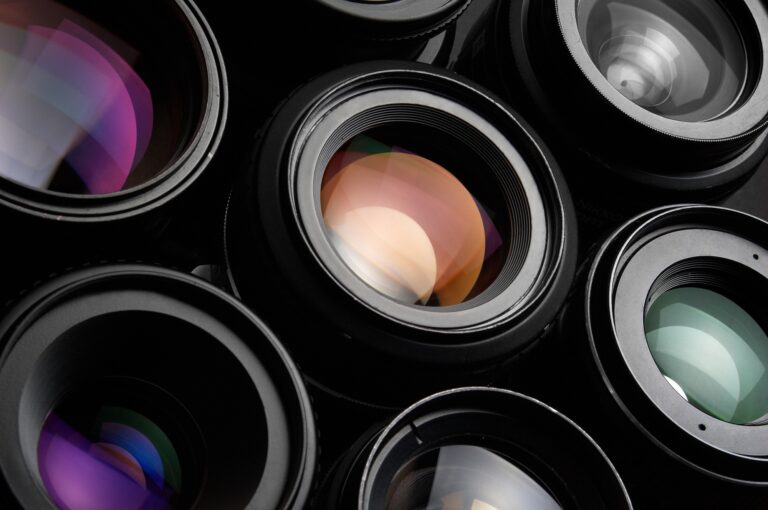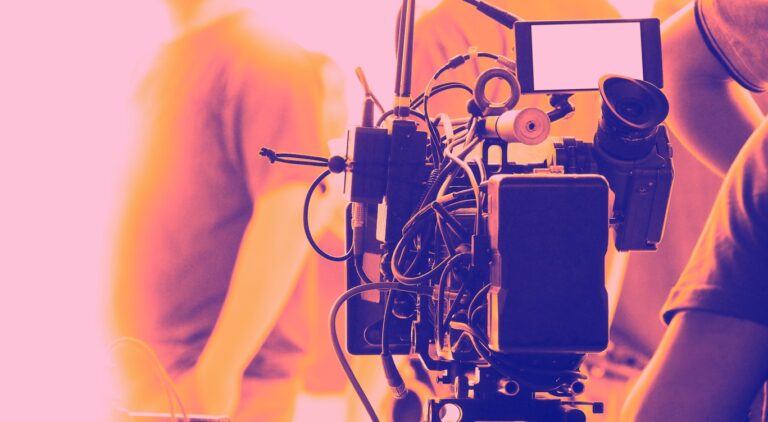Introduction to AI in Post-Production
Artificial Intelligence (AI) has become a transformative force across various industries, and the realm of post-production is no exception. The integration of AI into post-production workflows is revolutionizing the way films, television shows, and digital content are edited, enhancing both efficiency and creativity. By automating repetitive tasks and providing intelligent insights, AI is enabling editors to focus more on the artistic aspects of their work. This article delves into the multifaceted impact of AI on post-production, exploring its evolution, benefits, tools, and future trends.
The Evolution of Post-Production: From Manual to Automated
The journey of post-production has been marked by significant technological advancements. In the early days, editing was a labour-intensive process involving physical film splicing and manual adjustments. The advent of digital editing software in the late 20th century marked a significant leap, allowing for more precise and flexible edits. However, these tools still required substantial human intervention and time.
The introduction of AI into post-production represents the latest evolutionary step. AI algorithms can analyze vast amounts of data, recognize patterns, and make decisions that would take humans hours or even days. This shift from manual to automated processes is not just about speed; it’s about enhancing the quality and creativity of the final product. For instance, AI can suggest edits based on previous projects, ensuring consistency and saving time.
Moreover, AI’s ability to learn and adapt means that it continually improves its performance. As more data is fed into AI systems, they become better at understanding the nuances of editing, from pacing to emotional tone. This ongoing evolution promises to make post-production an even more dynamic and creative field.
Key Benefits of AI in Post-Production Workflows
One of the most significant benefits of AI in post-production is the dramatic reduction in editing time. Traditional editing processes can be time-consuming, often requiring multiple revisions and fine-tuning. AI can automate many of these tasks, such as sorting through hours of footage to find the best takes, thereby freeing up editors to focus on more creative aspects.
Another key benefit is the enhancement of precision and consistency. AI algorithms can analyze footage frame by frame, ensuring that edits are seamless and transitions are smooth. This level of precision is particularly valuable in projects that require a high degree of technical accuracy, such as action sequences or complex visual effects.
AI also brings a new level of creativity to post-production. By analyzing vast amounts of data, AI can offer innovative suggestions that human editors might not have considered. For example, AI can recommend unique color grading options or suggest unconventional cuts that enhance the narrative flow. This blend of automation and creativity is setting new standards in the industry.
AI-Powered Editing Tools: An Overview
The market for AI-powered editing tools is rapidly expanding, offering a range of solutions tailored to different aspects of post-production. Adobe’s Sensei, for instance, uses AI to automate tasks like color matching and scene editing, significantly speeding up the workflow. Similarly, Blackmagic Design’s DaVinci Resolve incorporates AI for facial recognition and object tracking, making it easier to apply consistent edits across multiple scenes.
Another notable tool is Avid’s Media Composer, which uses AI to assist with script-based editing. By analyzing the script and matching it with the footage, the software can automatically assemble a rough cut, saving editors a considerable amount of time. These tools are not just about automation; they are designed to enhance the creative process by providing intelligent insights and suggestions.
AI-powered tools are also making their way into niche areas of post-production. For example, Lumen5 uses AI to convert blog posts into engaging videos, while Magisto leverages AI to create professional-quality video content from raw footage. These tools are democratizing the editing process, making high-quality post-production accessible to a broader audience.
Enhancing Efficiency: How AI Reduces Editing Time
One of the most compelling advantages of AI in post-production is its ability to significantly reduce editing time. Traditional editing involves numerous repetitive tasks, such as logging footage, syncing audio, and applying basic edits. AI can automate these processes, allowing editors to focus on more complex and creative tasks. For instance, AI algorithms can quickly sort through hours of footage to identify the best takes, a task that would take a human editor much longer.
AI also excels in automating the assembly of rough cuts. By analyzing the script and matching it with the footage, AI can create a preliminary edit that serves as a strong foundation for further refinement. This not only speeds up the editing process but also ensures that the initial cut is more aligned with the director’s vision. According to a report by PwC, AI can reduce the time spent on repetitive tasks by up to 40%, allowing editors to allocate more time to creative decision-making.
Moreover, AI’s ability to learn and adapt means that it becomes more efficient over time. As it processes more projects, it gains a better understanding of the editor’s style and preferences, making increasingly accurate suggestions. This continuous improvement further enhances efficiency, making AI an invaluable tool in modern post-production workflows.
Smart Edits: Leveraging AI for Precision and Creativity
AI’s role in post-production is not limited to automating repetitive tasks; it also brings a new level of precision and creativity to the editing process. One of the ways AI achieves this is through intelligent scene detection. By analyzing the content of each frame, AI can identify key elements such as faces, objects, and actions, making it easier to apply precise edits. This level of detail ensures that transitions are smooth and that the final product is of the highest quality.
AI also enhances creativity by offering innovative suggestions that human editors might not have considered. For example, AI can analyze the emotional tone of a scene and recommend music or sound effects that enhance the mood. It can also suggest unique color grading options that give the project a distinct visual style. These creative insights are invaluable in producing content that stands out in a crowded market.
Furthermore, AI’s ability to analyze vast amounts of data allows it to identify trends and patterns that can inform creative decisions. For instance, AI can analyze audience reactions to previous projects and provide insights into what elements were most effective. This data-driven approach enables editors to make more informed decisions, resulting in a final product that resonates more strongly with the audience.
AI in Color Grading: Achieving Consistent Visual Quality
Color grading is a critical aspect of post-production that significantly impacts the visual quality of the final product. Traditionally, color grading has been a time-consuming and subjective process, requiring a high level of skill and experience. AI is transforming this process by offering tools that automate and enhance color grading, ensuring consistent visual quality across the entire project.
One of the key advantages of AI in color grading is its ability to analyze and match colors across different scenes. By identifying the color palette of a reference image, AI can apply similar grading to other scenes, ensuring a cohesive look. This is particularly useful in projects with multiple locations or varying lighting conditions, where maintaining visual consistency can be challenging.
AI also brings a new level of precision to color grading. By analyzing each frame in detail, AI can make subtle adjustments that enhance the overall visual quality. For example, it can automatically correct color imbalances, adjust exposure levels, and enhance contrast, resulting in a more polished final product. According to a study by Technicolor, AI-powered color grading can reduce the time spent on this task by up to 30%, allowing colorists to focus on more creative aspects.
Moreover, AI’s ability to learn and adapt means that it continually improves its performance. As it processes more projects, it gains a better understanding of the colorist’s style and preferences, making increasingly accurate suggestions. This continuous improvement further enhances the quality and efficiency of color grading, making AI an invaluable tool in modern post-production workflows.
Sound Design and Mixing: The Role of AI in Audio Post-Production
Sound design and mixing are crucial elements of post-production that significantly impact the overall quality of the final product. Traditionally, these tasks have been labor-intensive and time-consuming, requiring a high level of skill and experience. AI is transforming audio post-production by offering tools that automate and enhance sound design and mixing, ensuring a high-quality audio experience.
One of the key advantages of AI in sound design is its ability to analyze and process audio data in real-time. By identifying key elements such as dialogue, music, and sound effects, AI can automatically adjust levels, apply filters, and remove unwanted noise. This level of automation significantly reduces the time spent on audio post-production, allowing sound designers to focus on more creative aspects.
AI also enhances creativity in sound design by offering innovative suggestions that human editors might not have considered. For example, AI can analyze the emotional tone of a scene and recommend sound effects or music that enhance the mood. It can also suggest unique audio treatments that give the project a distinct sound. These creative insights are invaluable in producing content that stands out in a crowded market.
Furthermore, AI’s ability to learn and adapt means that it continually improves its performance. As it processes more projects, it gains a better understanding of the sound designer’s style and preferences, making increasingly accurate suggestions. This continuous improvement further enhances the quality and efficiency of sound design and mixing, making AI an invaluable tool in modern post-production workflows.
AI-Driven Visual Effects: Transforming Imagination into Reality
Visual effects (VFX) are a critical component of modern filmmaking, enabling creators to bring their imaginative visions to life. Traditionally, VFX has been a labour-intensive and time-consuming process, requiring a high level of skill and experience. AI is transforming VFX by offering tools that automate and enhance the creation of visual effects, ensuring a high-quality final product.
One of the key advantages of AI in VFX is its ability to analyze and process visual data in real-time. By identifying key elements such as objects, characters, and backgrounds, AI can automatically apply effects, track movements, and generate realistic animations. This level of automation significantly reduces the time spent on VFX, allowing artists to focus on more creative aspects.
AI also enhances creativity in VFX by offering innovative suggestions that human artists might not have considered. For example, AI can analyze the visual style of a scene and recommend effects or treatments that enhance the overall look. It can also suggest unique visual elements that give the project a distinct style. These creative insights are invaluable in producing content that stands out in a crowded market.
Furthermore, AI’s ability to learn and adapt means that it continually improves its performance. As it processes more projects, it gains a better understanding of the artist’s style and preferences, making increasingly accurate suggestions. This continuous improvement further enhances the quality and efficiency of VFX, making AI an invaluable tool in modern post-production workflows.
Case Studies: Success Stories of AI in Post-Production
The impact of AI in post-production is best illustrated through real-world case studies that highlight its transformative potential. One notable example is the use of AI in the production of the film “Morgan.” The trailer for this film was created using IBM’s Watson, an AI system that analyzed hundreds of horror movie trailers to identify key elements that make them effective. The result was a trailer that was not only engaging but also created in a fraction of the time it would have taken a human editor.
Another success story is the use of AI in the post-production of the TV series “Westworld.” The show’s creators used AI to analyze the script and match it with the footage, automating the assembly of rough cuts. This not only sped up the editing process but also ensured that the initial cuts were more aligned with the director’s vision. According to a report by HBO, the use of AI reduced the time spent on rough cuts by 30%, allowing editors to focus on refining the final product.
AI has also been successfully used in the post-production of music videos. For instance, the music video for “Sick Boy” by The Chainsmokers was edited using Adobe’s Sensei AI. The AI analyzed the footage and made intelligent suggestions for cuts, transitions, and effects, resulting in a visually stunning final product. According to the video’s director, the use of AI not only sped up the editing process but also enhanced the overall creativity of the project.
Challenges and Limitations of AI in Post-Production
While AI offers numerous benefits in post-production, it is not without its challenges and limitations. One of the primary concerns is the potential loss of creative control. While AI can automate many tasks and offer intelligent suggestions, it is ultimately up to the human editor to make final decisions. There is a risk that over-reliance on AI could lead to a homogenization of content, where projects start to look and feel similar due to the use of similar algorithms.
Another challenge is the quality of AI-generated edits. While AI has made significant strides in recent years, it is not yet perfect. There are instances where AI-generated edits may not meet the desired quality standards, requiring human intervention to correct. This can be particularly problematic in high-stakes projects where precision and quality are paramount.
Furthermore, there are ethical considerations related to the use of AI in post-production. For instance, the use of AI to manipulate footage or audio can raise questions about authenticity and integrity. There is also the potential for job displacement, as AI automates tasks traditionally performed by human editors. According to a report by McKinsey, up to 30% of jobs in the media and entertainment industry could be automated by 2030, raising concerns about the future of employment in this field.
The Future of AI in Post-Production: Trends and Predictions
The future of AI in post-production is promising, with numerous trends and predictions pointing to continued growth and innovation. One of the key trends is the increasing integration of AI with other emerging technologies, such as virtual reality (VR) and augmented reality (AR). By combining AI with VR and AR, creators can produce more immersive and interactive content, pushing the boundaries of traditional storytelling.
Another trend is the development of more advanced AI algorithms that can understand and replicate human creativity. Researchers are working on AI systems that can analyze and mimic the creative processes of human editors, resulting in more sophisticated and nuanced edits. According to a report by Gartner, AI will be able to replicate human creativity in post-production within the next decade, leading to even more innovative and high-quality content.
Furthermore, the democratization of AI-powered editing tools is expected to continue, making high-quality post-production accessible to a broader audience. As these tools become more affordable and user-friendly, independent creators and small production companies will be able to compete with larger studios, leading to a more diverse and vibrant media landscape.
In conclusion, AI is transforming post-production by streamlining workflows, enhancing creativity, and improving the overall quality of content. While there are challenges and limitations to consider, the future of AI in post-production is bright, with numerous trends and predictions pointing to continued growth and innovation. As AI continues to evolve, it will undoubtedly play an increasingly important role in shaping the future of media and entertainment.





